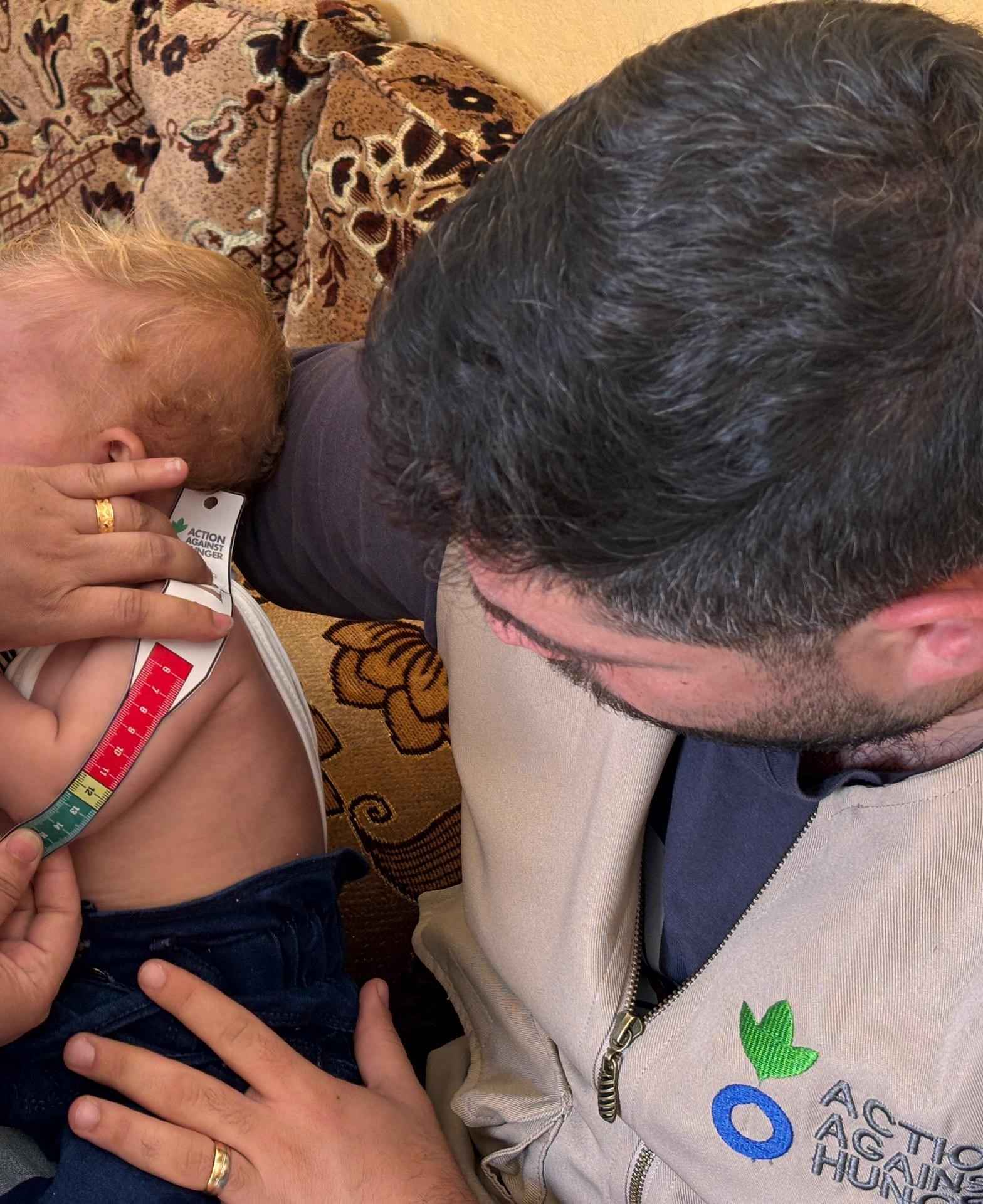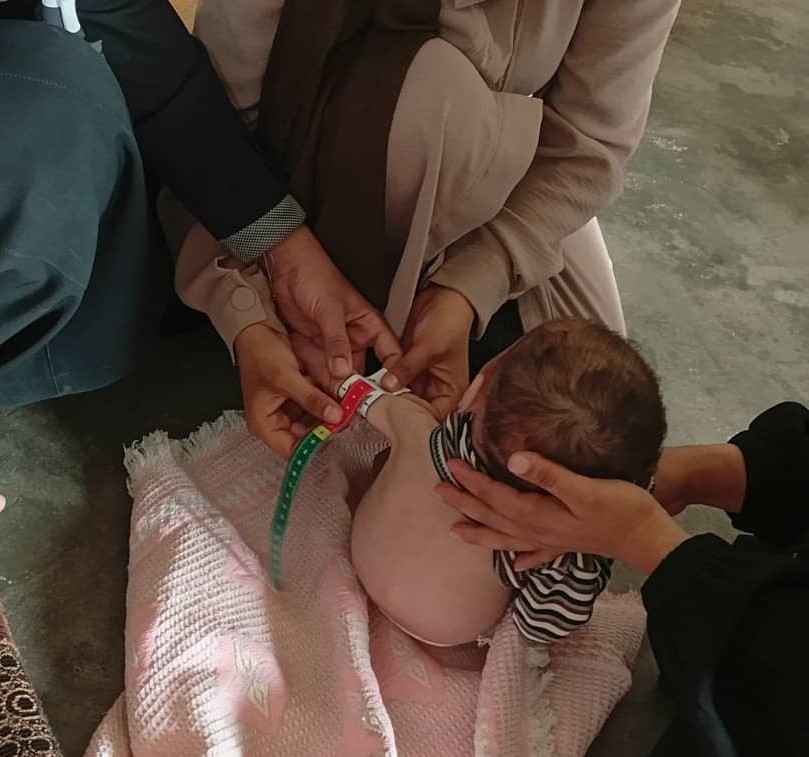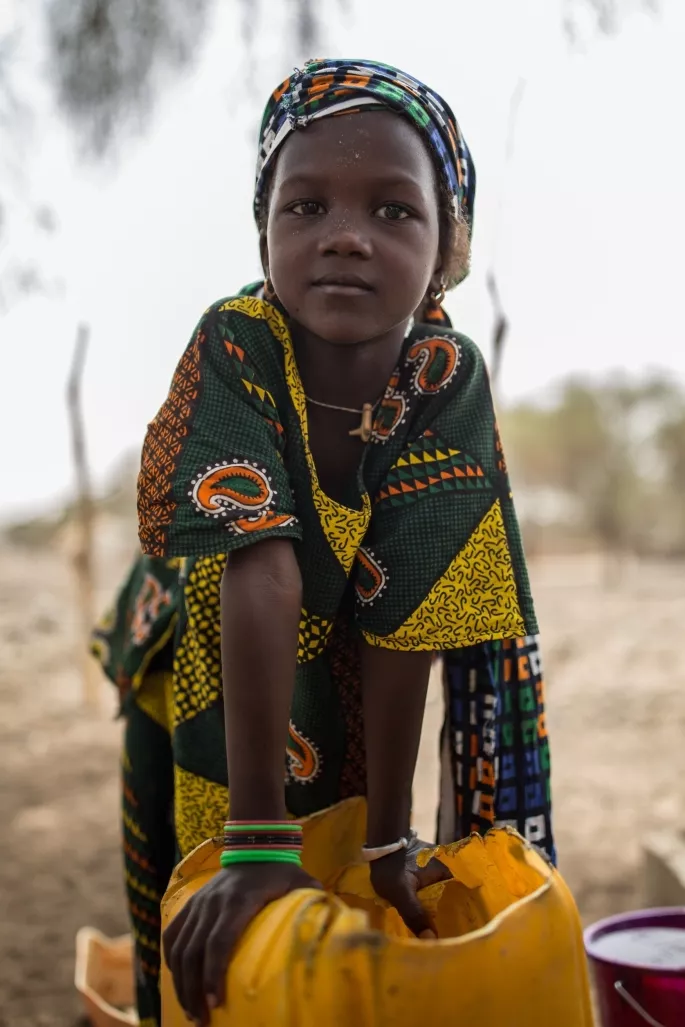

Breaking the Cycle in Syria: How Community Health Workers Saved Rima and Shaimaa's Children from Malnutrition
Rima’s story
Rima is a 20-year-old homemaker from a village in Aleppo, whose world revolves around her three young children: four-year-old Hani, two-and-a-half-year-old Thurayya, and one-year-old Sama. She lives with them and her 22-year-old husband, who works as a laborer earning a modest monthly income. The young family shares their home with the children's grandfather, whose support is a crucial pillar, helping them make ends meet.
The family has experienced a loss that has left a lasting mark on Rima. By the age of 20, Rima had already had four children, having been married at 15.
"I lost my second daughter when she was just three months old," Rima shared, her eyes welling up with tears. "Her body was failing to grow. Even her skin began to deteriorate. We spent a month in the hospital, but her condition was so critical when we arrived that there was no chance for any medical intervention to save her."
That same fear was creeping back into Rima’s life as she watched her two youngest daughters with a growing sense of dread. It was at this time that a team of Community Health Workers, supported by Action Against Hunger (ACF) and funded by Global Affairs Canada (GAC), arrived in her village. Their mission was to conduct home visits, deliver key health messages, and screen children under five and pregnant and lactating women for malnutrition by measuring their Mid-Upper Arm Circumference (MUAC).
Picture: Sama's MUAC Reading from the CHW's First Visit

The team screened the children for malnutrition, and the results were alarming. Little Sama showed clear signs of Severe Acute Malnutrition (SAM) with a MUAC reading of 10.5 cm. While Thurayya's reading of 13 cm might sometimes appear deceptively normal, it was also a shock. Thanks to their specialized training, the team noticed the subtle signs of edema, swelling that indicated severe protein deficiency and a sign of one type of a very sever acute malnutrition called Kwashiorkor. This condition is often overlooked because a child can still look "chubby" while their body is, in fact, breaking down internally.
The health workers had been trained to spot this hidden killer. They immediately referred both girls to a primary healthcare center.
Rima recalls her daughters' condition four months ago, before the intervention. “Before being referred to the health center, my girls were extremely lethargic. Thurayya, especially, couldn't even stand on her own. She didn’t play or smile… she was just fading away.”
The road to recovery was not without its moments of fear. “I was scared at first because their measurements initially dropped,” Rima admitted. However, the community health team reassured her, explaining that for children with edema, it is common for the measurements to decrease as the dangerous swelling subsides. Only after this crucial step would their weight and arm circumference begin to naturally increase, a sure sign that true recovery was underway.
Picture: Sama's follow-up shows improved MUAC readings

Now, the change is incredible,” Rima says, a clear spark of hope now shining in her eyes. “My daughters are so much more active, particularly Thurayya. She can now take steps, she tries to dance, and her energy has returned in a way I never thought possible. I want to thank your organization for this life-changing intervention. You saved my family from losing another child, I was watching Thurayya follow the same tragic path as her late sister.”
The Community Health Supervisor provided a professional perspective on the family's case, outlining the severe clinical reality the children faced and underscoring how critical the intervention had been.
“The mother had already lost a child to the same symptoms, severe swelling and skin peeling,” he said. “This points to extreme immune suppression from malnutrition. This isn't just a statistic; it's a preventable tragedy. What changed this time was our community health workers. Their specialized training enabled them to immediately identify the oedema, confirm the severity, and refer the children. This case proves that investing in this specific frontline skillset saves lives. Without their vigilance, these two little girls would have likely faced the same fate as their sister.”
Today, Thurayya's laughter is a powerful indicator of her recovery, made possible by knowledge, compassion, and timely action.
Shaimaa’s story
Shaimaa is a woman in her thirties, a wife, and a mother of seven. She and her family were displaced for seven years due to the security situation in their home area. The family returned to their village in Aleppo only to find their home occupied. With nowhere else to go, they have been living ever since as guests in a relative's cramped house.
The weight of their financial struggles rests heavily on her shoulders. "My husband works as a porter in the vegetable market," she explained. "His income is meager, around 300,000 Syrian pounds a month (about USD 27), sometimes a little more. It's a constant pressure. With so many children, the cost of milk and diapers alone is overwhelming."
Their profound lack of resources has forced them into difficult, heart-wrenching compromises.
"We've had to find ways to cope that we never wanted," Shaimaa confessed. "We've replaced disposable diapers with scraps of cloth that I have to constantly wash and reuse. When we can't afford formula, I have to give the babies a mixture of starch and water. It breaks my heart."
Our dedicated community health workers visited Shaimaa’s home, and what they discovered was shocking. "When we tried to take the measurements of Jamil, the youngest son, our standard MUAC tape was too large to fit him. We had to cut and modify the tape just to get a reading." one of them explained. The number that appeared was one they had never encountered before: 7.8 cm, a reading so critical it signaled a fight for life itself. "We immediately referred the mother and child to the nutrition unit at the Primary Healthcare Center."
Picture: Jamil during the Community Health Workers' first visit.

After seeing her children's severe malnutrition, Shaimaa revealed a painful history. "I have seven living children, but I have lost six," she said. "Now I am pregnant again, and I feel completely powerless." Her ability to make decisions about her own health is limited, as her husband opposes the use of family planning due to deeply held traditional beliefs.
Jamil now receives 30 packets of therapeutic peanut butter every two weeks, while older brother Raed gets 60 preventive packets a month to safeguard his health.
"My children, especially Jamil, were so listless. He couldn't even lift his head. I could see every tiny bone in his little body; he was so thin." Her voice then lifted, "But now, after Jamil during the Community Health Workers' first visit. the organization's close follow-up, his health has improved so much. He plays, he interacts, and his measurements are dramatically better."
With tears welling in her eyes, she made a heartfelt plea. "My only request is that you continue these activities and interventions. Please, also direct them towards older people and husbands, because what our community lacks most is awareness. And I must thank your organization. You saved my son. He is here in my arms today; I did not lose him."
Later, the Community Health Officer for Action Against Hunger reflected on the underlying causes of malnutrition in Shaimaa’s hometown. " Al-Safirah region has the highest recorded rates of malnutrition in all of Syria," he stated. "The reasons form a complex web of poverty, lack of education, harmful traditions, and, most critically, child marriage and frequent childbirth."
Picture: A follow-up with Jamil shows remarkable improvement

He pointed directly to the facts of this case. "Shaimaa was married at just 13 years old to a husband only a year older. The family has had 13 pregnancies and lost six children for reasons directly or indirectly related to malnutrition, while the mother herself is also malnourished. This is not an isolated story; there are countless families like this one. Interventions like ours are not just helpful, they are vital. They have a powerful and lasting impact on the very fabric of our society."
As of the date of these stories (end of September 2025), 1,732 children and Pregnant Lactating Women affected by one form of malnutrition are under active malnutrition follow-up across Aleppo city and its rural areas, supported by ACF's ongoing interventions, funded by GAC.
Their story illustrates that while saving a life is critical, sustainable healing depends on equipping entire communities with the knowledge to foster resilience and create lasting change.
